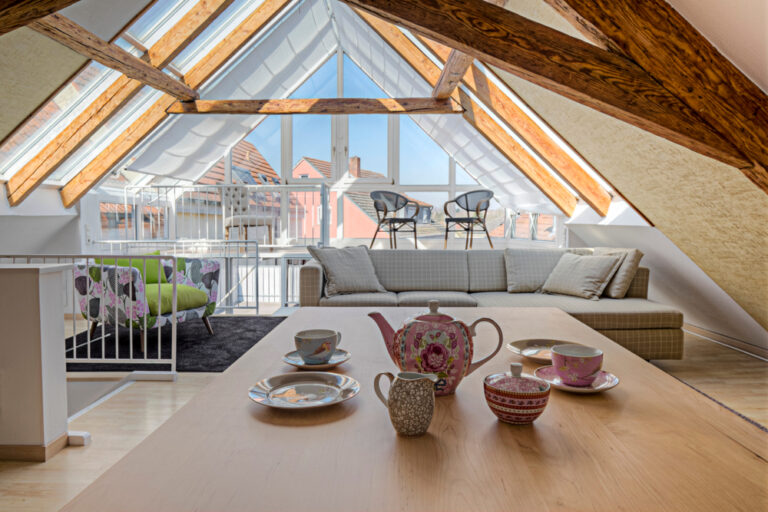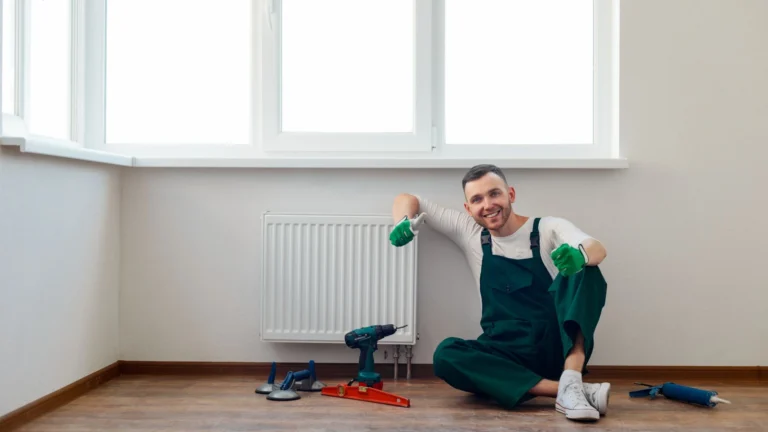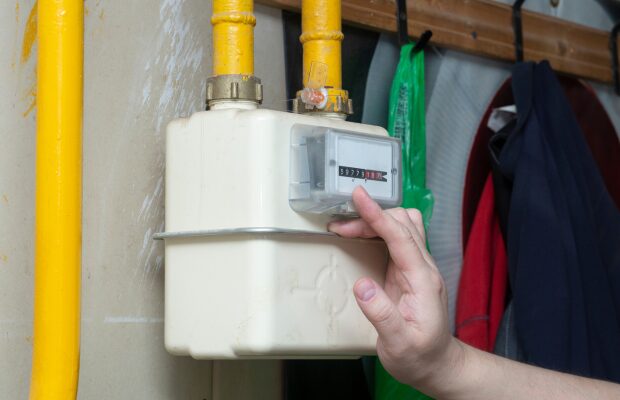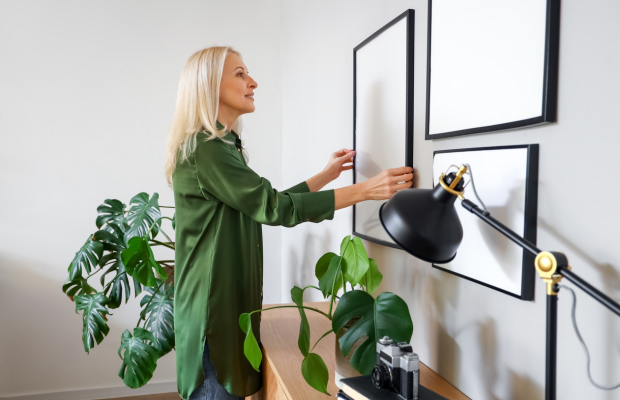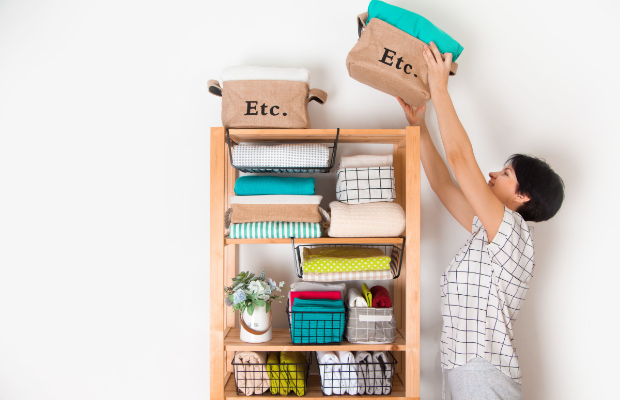Whether you’re selling your home, a landlord looking to find a new tenant or simply want to utilise your space a little better, creating a home office can give your property something extra.
Flexible and remote working has increased by almost a quarter of a million in the past decade and Office of National Statistics (ONS) data predicts around 50% of the UK workforce will be working from home by next year.
So, if you’re a landlord renting, in particular, to millennials or older Generation Z tenants, a home office really is a must if you want your property to stand out from the crowd.
We’re also in a market where tenant demands are on the rise and things like office space and super-fast WiFi thrown in with the rent are expected by many now.
Adding a home office can also increase the value of your property if you’re looking to sell, not to mention boost its appeal, alongside other finishing touches, to potential buyers – many of whom now place office space as high on their wish list as the number of bedrooms.
But where do you start when it comes to home offices? Our guide offers 10 practical tips for creating a great office space in your property…
1. Location
The first of our small home office ideas is the most important: Location!
While the obvious and most popular choice for a home office is often amending the smallest bedroom, this is not always the best option for several reasons.
If you’re a landlord or selling your home, the number of bedrooms is usually key to tenants and buyers.
Losing a bedroom could cost you, even though home offices are now far more popular and in-demand than they once were.
Of course, there are lots of factors to consider before undertaking major work.
But adding space to your home through a loft conversion or extension can add considerable value, while also providing that key extra room to create a bespoke home office.
Garden offices are also becoming more popular and can be a great way to utilise space you already have. They are also cost-efficient and have less disruptive than major internal work – but, of course, you do lose a bit of your garden!
2. Invest in good equipment and storage
When creating a home office, particularly in a small bedroom, use of space is key – and many people fall into the organised chaos trap!
Remember, whatever your reasons for creating a home office space, it’s an investment – so invest wisely in equipment and storage solutions that really make it a space to be proud of.
Drawers, box files and clever shelving can all help to keep your space in order and stop it feeling enclosed and non-productive.
3. Have you got enough sockets?
If you’re converting an existing bedroom or adding space through an extension or loft conversion, one of the easiest things to forget is plug sockets.
If you’re using a small bedroom, there’s a strong chance it will lack enough sockets for office equipment and technology.
If you’re a landlord, this is even more important due to electrical safety regulations in rented properties.
4. Decor fit for a worker
Colour is a powerful thing.
It can evoke emotions and influence levels of productivity, so is hugely important for a space like a home office.
Colours like blues and lilacs tend to encourage feelings of peace and relaxation, so if you want to get any work done, it may be best to avoid those in your home office.
Brighter colours like purples or yellows tend to help eliminate procrastination, but if you can’t handle those shades, stick to greys and creams which won’t distract and will work should you ever need to use the space for something else in the future.
5. Let the light in
If you’ve opted to alter a bedroom and create a home office space then it’s likely plenty of natural light will come into the space through a window.
However, if you are creating an office space from scratch, or putting up a garden office, make sure you examine how much light is likely to come into the space.
Natural light improves mood and can make us more productive, so if you are, for instance, looking at a loft conversion to create your office space, consider a roof window (or several!) so you can guarantee plenty of warming light.
In the case of a garden office, consider where the building will sit and whether anything blocks out the light before it’s constructed.
And if all else fails, look at electric lighting that mimics natural light.
6. Be inspired, but be practical
Where’s the first place you go for home design inspiration?
Perhaps online, to a site like Pinterest? Or maybe a glossy interior design magazine?
Wherever you look for ideas, remember to keep practicality at the top of your list.
A home office should be a comfortable and pleasant place to be, particularly if you are spending 37 hours a week inside.
But for that reason alone, it’s also got to be a space that works and is practical as a working environment.
So, while those soft, upholstered chairs on Pinterest might catch your eye and an small upcycled vintage desk would work perfectly alongside them, would the chair support your back and the desk support your box files?
7. Plan for visitors
If you’re planning a brand new space as your home office, think about factoring in some comfort space as well as your desk and storage.
Even though you’re at home working, it’s still hugely important to take breaks, so if you have the room, factor in a small couch and coffee table where you can relax for lunch or take a break to read.
If you have clients visiting you, this can also work well.
And if you’re a landlord, a relaxation space in a home office is sure to be a huge tick in the box of any prospective tenant.
8. Privacy is key
Working from home has benefits for family life as well as for productivity and morale.
Being near to the children’s schools for pick-up, for example, can be hugely beneficial.
But working from home can also come with distractions – particularly from the little ones!
If you’re thinking of constructing a garden office or converting a loft space, this can definitely provide you with the peace that you need.
But amended bedrooms can be seen as an open invite for family members to pop up for a chat when you’re in the middle of something vitally important.
Consider a lock on the door or a sign that goes up when you wish to be left alone if you’re not in a position to place your office away from prying eyes.
9. Keep distractions at arm’s length
While studies show productivity and morale are higher among remote-working staff, it is still possible to ease into distractions when working from home.
So, really consider carefully if you need that flat screen TV on the wall of your home office.
However, make sure you do pencil in regular short breaks and a reasonable amount of time for lunch – preferably away from your office so you’re not tempted to work while you eat.
10. Don’t be deterred
Even if you don’t have the space for a bespoke home office, or can’t stretch to adding the square-footage you need, don’t be deterred.
It’s amazing how useful that space just under the stairs can be for a desk and chair.
Or even that unused part of the landing at the top of the stairs.

